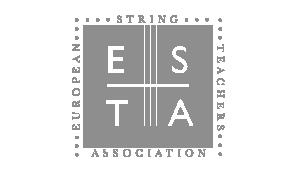There are several etymological connections between breath and spirit: The Latin ‘psyche’ means animating spirit whilst ‘spiritus’ means breath. In Hebrew ‘ruach’ means wind, breath or spirit. The Greek psykhe, means soul, mind, spirit, breath and life and is described in one dictionary thus:
The invisible animating principle or entity, which occupies and directs the physical body.
It was through yoga that I first experienced the breath ‘directing the physical body’. I had thought, hitherto, that our instrumental practice was a process of gaining more and more control, and the new experience of the breath creating space for release and thus for movement was a revelation that changed my playing completely.
Over the next ten years, I developed an approach called The Breathing Bow. It is nothing new. Drawing on ancient practices and organic principles, it is inspired by the many musicians I have had the privilege to work and play with. The breath is experienced as the common element, which unifies and brings into balance the physical, mental, musical, emotional and spiritual realms: Through a series of exercises the expansion and contraction of the rib cage become the seed of the bow’s movement; paying attention to the breath frees us from crippling inner judgement; the shape of the breath informs the shape of the phrase; hyper and hypo ventilation are calmed through breath work; a quiet observing mind is cultivated to liberate us from ego attachment. My aim is to help my client become an embodied musician, one who plays with ease, economy and enjoyment, who freely communicates with her audience and who feels more like she is ‘being played’ rather than playing.
Always curious about how my approach ties in with other disciplines, and following on from some lively discussions at my home in Provence, I asked Dale Culliford (a friend, cellist in the Hallé and Alexander teacher) to collaborate with me on a Breathing Body,Breathing Bow workshop. It took place in November in New Mills, near Manchester. Professional, amateur and student cellists attended and as the introductions unfolded it appeared we had a bright array of issues in the room: One person wanted to leave their head backstage, another was breathing so fast they could not bring their bow to the string, a third was struggling to release and a fourth had so much inner commentary they were unable listen enough to play in tune. Solutions that we explored ranged from learning, through a short meditation, to listen without judgement, using the in and out-breaths to experience the different qualities of gesture and follow-through, tension and release, and locating the impulse to play deep in one’s centre before using the breath to carry that impulse through into movement. All the while, Dale was using her ‘hands on’ work to feel for holding patterns in people’s backs, hips and shoulders, gently encouraging them to release. As a new set of tools emerged for the musicians to use, bodies, sounds and spirits freed up and the music started to breathe. I believe everyone came away with renewed trust that it was possible to replace stress with enjoyment in performance.
Following on from this, Dale and I were invited to do a workshop at the Royal Northern College of Music. At the beginning of the day I often ask the group what comes to mind when they think of the in-breath and out-breath. Here are some of the things the students came up with.
Inspiration: Expression Receiving: Giving Holding: Letting go Down bow: Up bow Expansion: Contraction Doing: Non-doing Dominant:Tonic
High Tide: Low Tide
Listening to these young people we were reminded that breath was indeed an expression of life itself, and well worth paying attention to.
I often ask string players if anyone ever mentioned breathing to them in connection with their playing. The answer, usually, is no. In my own life as a cellist I was sometimes encouraged to breathe (catch my breath?) ‘between phrases’, or told not to hold it. Playing the cello was something my fingers did to try and communicate ideas I had in my head and, maybe, even a feeling I had in my heart. (Though how my heart would find its way into my fingers I had no idea.) My experience of playing the cello, especially on stage, was disjointed and uncomfortable. My problem, as I see it now, was one of embodiment, and the key to its solution has been (and continues, in my cello, yoga and meditation practice, to be) the breath.





